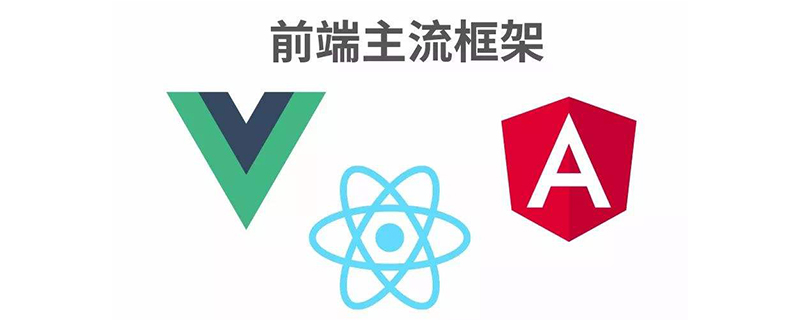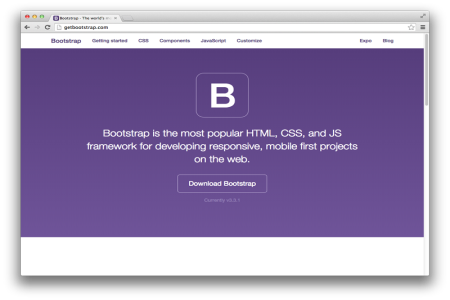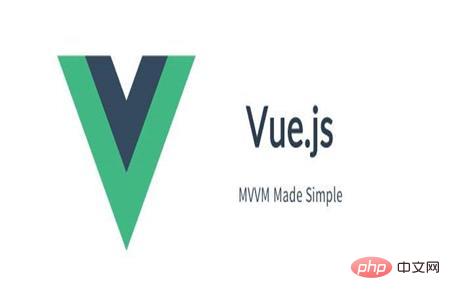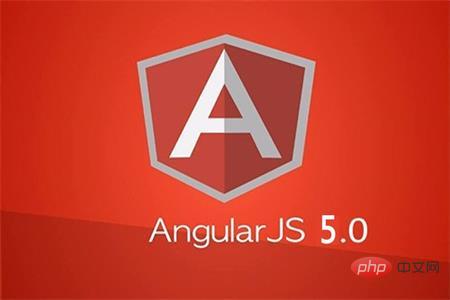What are the commonly used front-end frameworks?
Commonly used front-end frameworks include Bootstrap framework, React framework, Vue framework, Angular framework, Foundation framework, etc.
Now more and more front-end frameworks are beginning to appear. This brings great convenience to our project needs. Today in the article, I will introduce several front-end frameworks in detail, which has a certain reference effect. I hope it will be helpful to everyone.

Introduction to common frameworks:
Bootstrap Framework
Bootstrap is the most popular of the front-end frameworks available today, with an intuitive, stylish interface and powerful features that make it faster and easier You can use many third-party plug-ins to implement web development without bundling
add-ons. Most browsers support it, and it provides more combined resources than other front-end frameworks

React Framework
The React framework introduces many custom (at the time of creation) approaches to front-end web development. To use React, you first need to master the component architecture, JSX and one-way data flow, etc. The emergence of the
React framework has prompted the development of a large number of additional tools to achieve a high degree of flexibility.
Although flexibility is its main advantage, React also has some problems due to its flexibility. For example, you will face a choice problem when using React, and it does not have a reliable development workflow
. We have to build our own workflow using React. This is more difficult than using other JS frameworks because building into the framework requires a lot of development tools.

Vue Framework
The Vue framework is a progressive framework for building user interfaces. It can be applied layer by layer from bottom to top. Vue's core library only focuses on the view layer, which is easy to get started and easy to integrate with third-party libraries
. But it also has its own shortcomings: there are few ready-made solutions for Vue, so you may want to consider creating your own solutions to solve various problems.
As you can see, different front-end development frameworks bring different benefits to tables. What works for one developer or project may not work for another, so various solutions must be researched before figuring it out on your own.

Angular.js is often referred to as the MVW (Model-View-Whatever) framework, which includes: Rapid Code generation, easy testing of any application part and two-way data binding (changes on the backend are immediately reflected on the UI). Since its release, it has become the most used JS framework for development.
Angular-s is a better choice for enterprise-based applications or strict programming environments with high standards of code readability.
 Foundation framework
Foundation framework
Foundation was created by the web design company Zurb and is a very advanced enterprise-level front-end Framework, ideal for developing flexible, responsive websites. However, it is also quite complex to use, so it is not suitable for beginners. This feature-rich framework supports GPU acceleration for smooth, lightning-fast animations. Fastclick.js Renders quickly on mobile devices. It runs on the Sass preprocessor and includes Foundation-developed data exchange properties that allow you to load lightweight HTML portions for mobile devices and "heavier" HTML portions for larger screens.
Choice of framework:Each framework has its own advantages and disadvantages, as well as its specific uses , we can choose according to our project needs. For example, if your project is simple, there is no need to use a complex framework. Additionally, many options are modular, allowing you to use only the components you need or mix components from different front-end frameworks.
 Summary: The above is the entire article The content is here, I hope it will be helpful to everyone
Summary: The above is the entire article The content is here, I hope it will be helpful to everyone
The above is the detailed content of What are the commonly used front-end frameworks?. For more information, please follow other related articles on the PHP Chinese website!

Hot AI Tools

Undresser.AI Undress
AI-powered app for creating realistic nude photos

AI Clothes Remover
Online AI tool for removing clothes from photos.

Undress AI Tool
Undress images for free

Clothoff.io
AI clothes remover

AI Hentai Generator
Generate AI Hentai for free.

Hot Article

Hot Tools

Notepad++7.3.1
Easy-to-use and free code editor

SublimeText3 Chinese version
Chinese version, very easy to use

Zend Studio 13.0.1
Powerful PHP integrated development environment

Dreamweaver CS6
Visual web development tools

SublimeText3 Mac version
God-level code editing software (SublimeText3)

Hot Topics
 React vs. Vue: How to choose the right front-end framework
Sep 26, 2023 am 09:15 AM
React vs. Vue: How to choose the right front-end framework
Sep 26, 2023 am 09:15 AM
Comparison between React and Vue: How to choose the right front-end framework In front-end development, choosing the right framework is crucial to the success of the project. Among the many front-end frameworks, React and Vue are undoubtedly the two most popular choices. This article will help readers choose the front-end framework suitable for their own projects by comparing the advantages and disadvantages, ecosystem, performance, and development experience of React and Vue. 1. Comparison of the advantages and disadvantages of React and Vue Advantages of React: Component development: React splits the UI into
 How to integrate front-end framework and back-end framework in PHP?
May 13, 2023 am 08:06 AM
How to integrate front-end framework and back-end framework in PHP?
May 13, 2023 am 08:06 AM
As web application development becomes increasingly complex and requires greater interactivity, the use of front-end and back-end frameworks has become very common. In this process, integrating front-end and back-end frameworks has also become an essential step to ensure smooth operation and efficient performance of the application. This article will focus on how to integrate the front-end framework and the back-end framework in PHP. Overview of Front-End and Back-End Frameworks Front-end framework is a general term that refers to the user interface and interactive functionality of an application. HTML, CSS and Java
 How to use PHP for responsive design
Jun 06, 2023 am 10:50 AM
How to use PHP for responsive design
Jun 06, 2023 am 10:50 AM
With the popularity of mobile devices, responsive design has become a technology that cannot be ignored in website development today. It allows the website to present the best visual effects and user experience on different screen sizes. As a widely used programming language, PHP can play an important role in responsive design. In this article, we will explore how to leverage PHP for responsive design. 1. The basis of responsive design Before proceeding with responsive design, we need to understand the basic components of web pages. Usually, a web page is mainly divided into three
 An article to talk about the KeepAlive component in Vue
Nov 14, 2022 pm 08:21 PM
An article to talk about the KeepAlive component in Vue
Nov 14, 2022 pm 08:21 PM
Recently, I was looking at Vue-related knowledge points. When I saw the KeepAlive component, I was curious about how it could not re-render when switching between components, so I took a closer look. If you are also interested in knowing how the specific internal implementation is implemented or have a certain understanding but are not familiar enough, then you can also consolidate it together.
 Common challenges and solutions for integrating Java frameworks and front-end frameworks
Jun 05, 2024 pm 01:30 PM
Common challenges and solutions for integrating Java frameworks and front-end frameworks
Jun 05, 2024 pm 01:30 PM
Common challenges in integrating Java back-end frameworks with front-end frameworks include: Cross-domain request issues: Solution: Use CORS middleware or add CORS headers. View Template Integration: Solution: Use a front-end framework adapter or serverless function to handle HTML rendering. Data format conversion: Solution: Use a common data model or middle layer for conversion. Event handling: Solution: Use event bus or WebSockets for cross-frame event communication. State Management: Solution: Use a single state management system to share state across frameworks.
 Web3.0 is coming, is it front-end friendly?
Mar 15, 2023 pm 08:09 PM
Web3.0 is coming, is it front-end friendly?
Mar 15, 2023 pm 08:09 PM
Recently, the call for web3.0 has really become louder and louder, and it is becoming more and more crazy. For our front-end, what technology do we need? Is it front-end friendly? The following article will let you talk about it, I hope it will be helpful to you!
 Webman: A front-end framework that powers the development of elegant and efficient front-end applications
Aug 25, 2023 pm 07:31 PM
Webman: A front-end framework that powers the development of elegant and efficient front-end applications
Aug 25, 2023 pm 07:31 PM
Webman: A front-end framework that powers the development of elegant and efficient front-end applications. Webman is an open source front-end framework designed specifically for developing elegant and efficient front-end applications. It provides a series of tools and components to help developers quickly build modern front-end applications with good maintainability and scalability. Webman's design philosophy is simple and flexible. It provides a simple yet powerful API that allows developers to easily build complex front-end applications. at the same time,
 Master the front-end framework in PHP development CMS programming
Jun 21, 2023 am 08:54 AM
Master the front-end framework in PHP development CMS programming
Jun 21, 2023 am 08:54 AM
In today's Internet era, CMS (Content Management System) is widely used in website management and development. In this process, the front-end framework is also a very important link, especially for developers. Being proficient in the front-end framework can not only improve development efficiency, but also optimize the user interaction experience. This article will focus on explaining how to master the front-end framework in PHP development CMS programming. 1. What is a front-end framework? The front-end framework is based on HTML, CSS and Java






